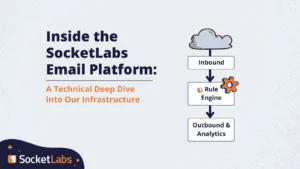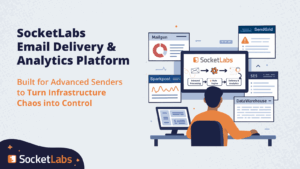Please welcome John Peters!
John Peters is the deliverability manager for Emma and Campaign Monitor and has been working in the email compliance and deliverability sector for nearly 10 years. He’s contributed to various blogs and presented at industry conferences like M3AAWG and Deliverability Summit.
John brings an incredible depth of knowledge when it comes to effective email marketing, and it’s clear from his answers; he truly values the customer experience and believes email should revolve around recipients for more success. He’s provided very detailed and thoughtful answers, so it’s best you read them for yourself, trust us.
How do you see email fitting into the marketing mix in 2025?
We live in an increasingly interconnected world and emails are an integral part of our daily lives, both personally and professionally. It’s expected that in 2025 emails will continue playing a significant part in the marketing mix as the number of global email users is expected to grow to 4.6 billion with an estimated 376.4 billion emails sent and received daily. That’s an impressive number of emails; however, it doesn’t necessarily translate to an increase in users’ time and capacity to engage with email content.
Email’s role in marketing will need to evolve along with advancements in technology, like the increased use of AI, and reactive consumer behaviors. Here are a couple of examples:
- Increased personalized and targeted campaigns: Consumers expect to receive content that is personalized and targeted to their specific interests. Marketers could use AI and large language models (LLMs) to generate personalized subject lines and body content while leveraging AI’s capacity to analyze large customer datasets to also achieve send time and email cadence optimization on the individual customer level. This capability would enable marketers to better identify customer preferences, behavior patterns, and buying habits to increase engagement and return on investment.
- Omnichannel integration: Marketers can already combine SMS and email marketing, like using emails to promote long-form content and including a link to a web landing page and opting in for SMS notifications. Similarly, they can use SMS to send more time-sensitive offers and updates, again linking to a landing page or a signup form for regular updates via email. Analyzing and combing multiple data sets will allow a marketer to tailor their message and select the appropriate marketing channel based on their customer’s behavior, preferences, and demographics.
In 2025, we can expect email to work seamlessly with other marketing channels, like social media, SMS, and websites, where emails serve as a link between them to drive traffic, nurture leads, and reinforce brand messaging. To stand out in recipients’ crowded inboxes, marketers must continuously innovate, embrace emerging technologies, and deliver personalized, relevant, and valuable content. This approach ensures their message cuts through the “noise” and creates a meaningful connection with their audience.








